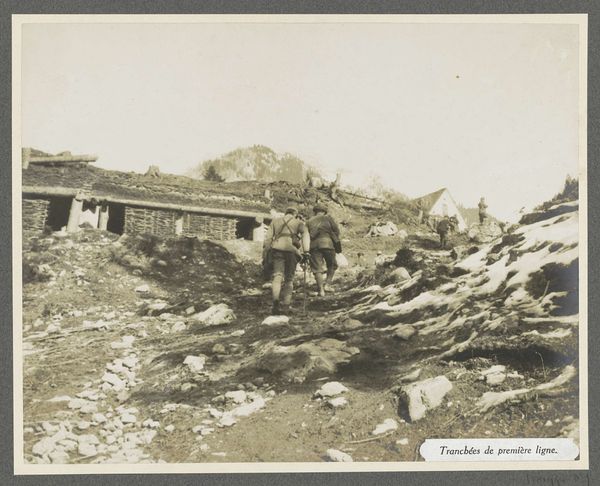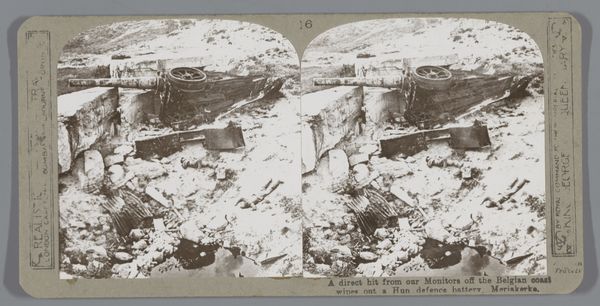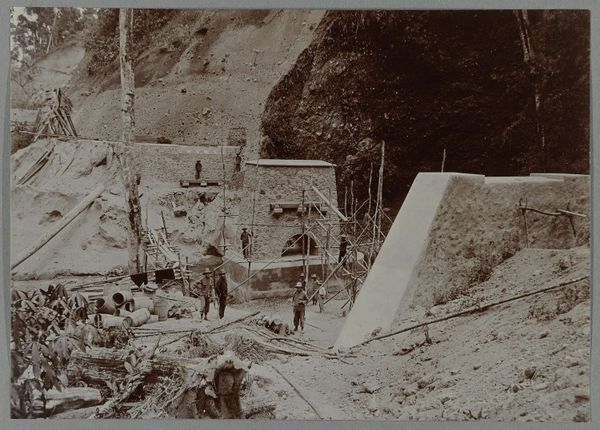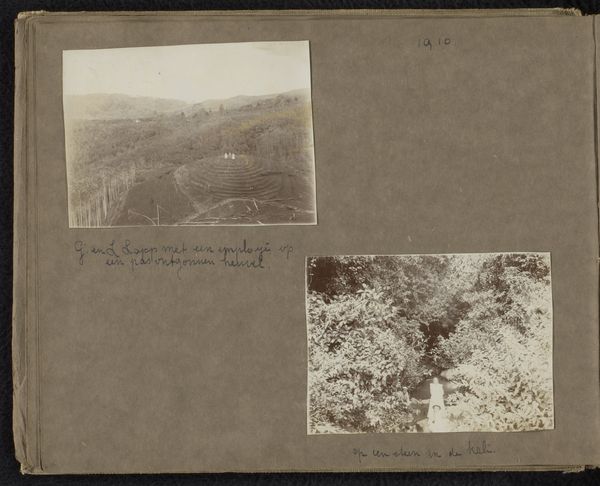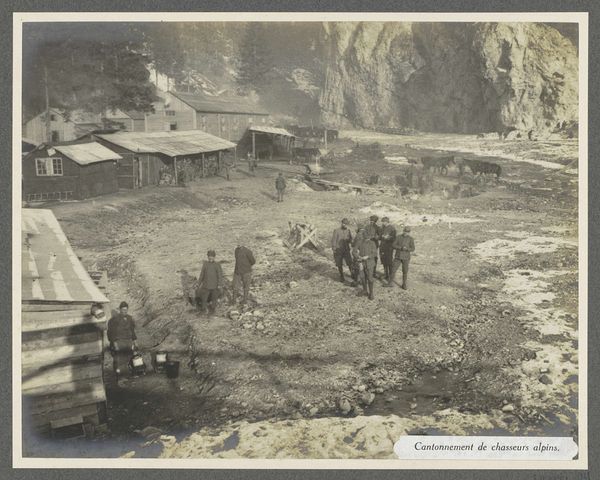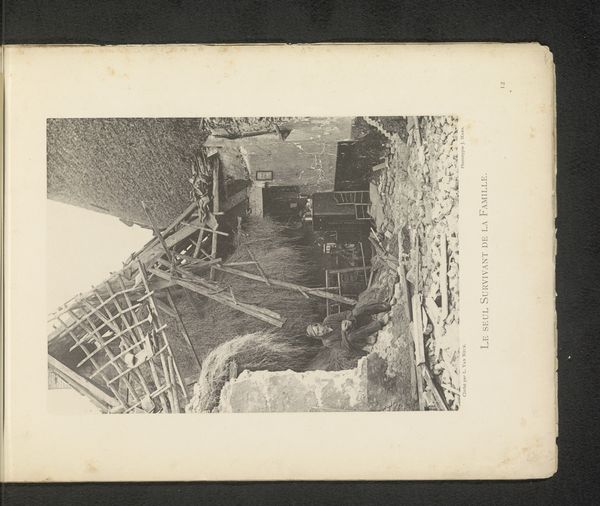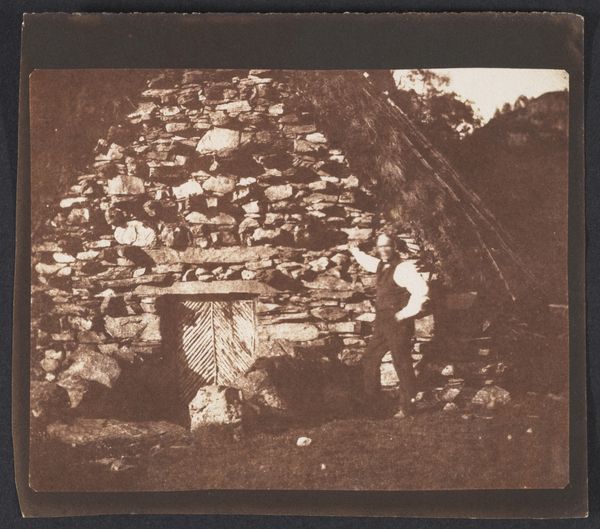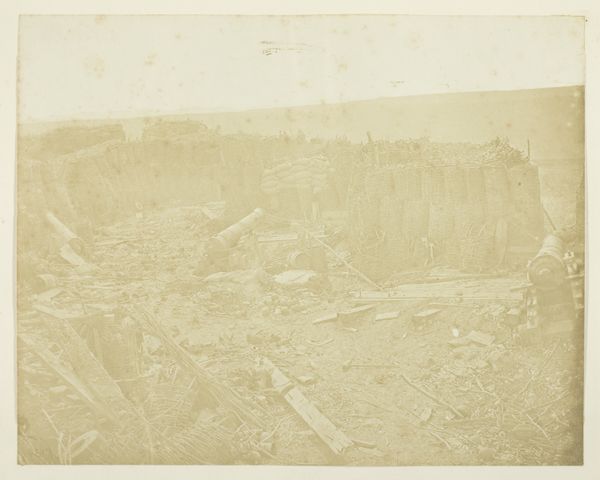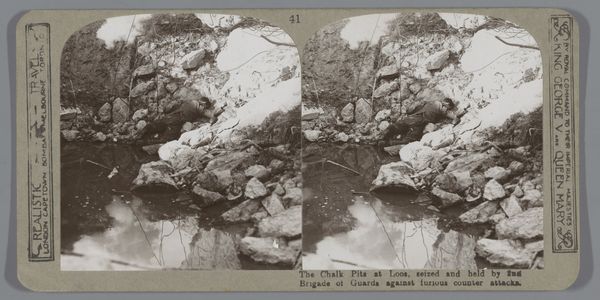
In de rotsen uitgegraven schuilplaatsen en prikkeldraadversperringen aan het front in de Dolomieten 1916
photography, gelatin-silver-print
landscape
archive photography
photography
gelatin-silver-print
realism
Dimensions: height 220 mm, width 280 mm
Copyright: Rijks Museum: Open Domain
This photograph by Henri de Rothschild captures shelters carved into rock and barbed wire entanglements on the Dolomite front. The image itself is a product of industrialized warfare. Photography, born in the 19th century, became a key tool for documenting and disseminating information about the conflict. But beyond the image, consider the crude shelters themselves. They are constructed from roughly hewn timber, a testament to the immediate need for protection. Barbed wire, a mass-produced product of the industrial age, is laid out in stark lines across the landscape. It speaks of division, control, and the reduction of human interaction to a purely functional, often brutal, level. The photograph prompts reflection on the sheer amount of manual labor required to create these defensive positions. Carving into rock, erecting timber structures, and stringing barbed wire – all under the constant threat of enemy fire. It’s a potent reminder of the human cost of conflict, and the way in which industrial materials shaped the experience of war.
Comments
No comments
Be the first to comment and join the conversation on the ultimate creative platform.
